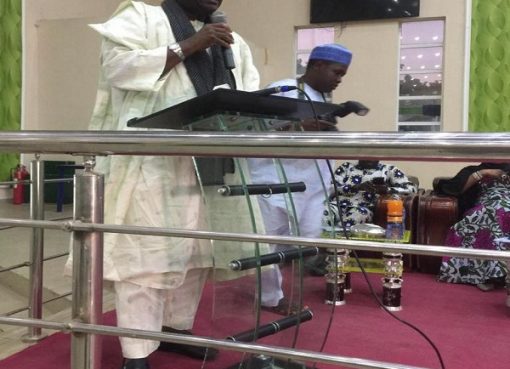We need the electricity generated by solar panels in order to meet our climate change mitigation targets. But solar power must be integrated rationally and fairly – something that can only be achieved with effective regulation.
The Norwegian government has recently approved a new prosumer scheme for local solar power distribution. But we believe that the scheme will have some unfortunate consequences.
We need to take a step back and think holistically about how local solar power generation should be financed. We also need a regulatory framework facilitating a coordinated system that ensures optimal utilisation of the distribution grid.
The new scheme will make it easier to share electricity generated from a single property unit such as a housing estate or business premises. This may be a smart move in that property owners will be handed an incentive to install solar panels that generate electricity that matches their properties’ consumption.
At the same time, the scheme opens the door to paying for the financing of solar energy development with reduced grid tariffs. We believe, however, that this is not without its problems.
Impact on electricity sharing arrangements
Interest in the installation of solar panels by both individuals and businesses has increased in recent years. The main reasons for this are high electricity prices combined with reductions in the price of solar panels. Moreover, so-called prosumers pay lower grid tariffs. A prosumer is a customer who not only generates his own electricity, for example from the solar panels installed on his roof, but also sends any surplus out into the grid. Those who share their electricity with their neighbours thus pay a reduced grid tariff.
Lower tariffs are all very well for those who have them, but we believe that the electricity grid represents a shared resource established for the benefit of society as a whole.
The grid tariff is used for maintenance of the existing grid and the building of new grid infrastructure if capacity is perceived as inadequate. Here in Norway, the grid has to be scaled to meet electricity requirements at those times when consumers need it most – on cold and sunless winter days. For this reason, the installation of more solar panels does nothing to reduce our need to expand grid capacity.
Everyone else must cover the ‘loss’
Even in the best-case scenario, the costs incurred by the grid companies linked to grid expansion will remain essentially unchanged as a result of the introduction of solar power, while prosumers and those who otherwise share electricity pay lower grid tariffs. This means that everyone else has to cover the ‘loss’.
In the worst case, a trend develops by which those with ample resources invest in solar panels and enter into lucrative sharing arrangements with their neighbours which are subsidised by the higher grid tariffs paid by others.
Voltage problems
Another type of challenge resulting from the widespread use of solar panels concerns voltage issues arising in the distribution grid. Ideally, the grid is constructed to transport electricity in one direction – out to each and every household and business. But when prosumer households send electricity in the opposite direction, this can result in voltage problems.
Norwegian grid companies have already experienced issues of this kind, even with the modest amounts of solar power installed to date. Such problems, which can result in equipment damage, typically arise in summer when the sun is shining and there is little need for heating. In such situations, the grid has to be upgraded to prevent excess voltages developing in outlet sockets. Building a new electricity grid is an expensive business. It takes a long time and often results in ecosystem damage.
Regulation offers solutions
According to the Norwegian government report (NOU) Nett i tide, which addresses the future development of the national grid, if Norway is to achieve full electrification of its industries and transport infrastructure, the grid has to be expanded.
At the same time, we believe that there is still space for the introduction of more solar power to the existing grid. We can find this space if, for example, we reduce the number of hours during which solar power generates voltage issues. Alternatively, we can make use of energy storage facilities, or try to ensure that electric vehicles are charged only when there is a surplus of electricity in the grid. Another possibility is to transfer some aspects of consumption to other times during the day.
In order for any of these solutions to be put into practice, a regulatory framework must be put in place. This can be achieved by measures such as tariff price incentives, the direct control of solar panel arrays, local relief measures involving batteries (as previously suggested by the Norwegian electricity security agency Elvia), or by means of local markets, set up to make it profitable to adapt consumption in response to access to locally-generated electricity.
Opening the door to local coordination
By providing incentives for local coordination between actors, more people will most likely either invest in shared energy storage facilities or learn to administer consumption more flexibly by means of heating systems or electric vehicle charging with the aim of reducing grid tariffs.
We currently lack measures that actively ‘assist’ the distribution grid by means of incentivising the coordination of local electricity generation and consumption. Local coordination will offer opportunities for the use of more solar power without any damage to the grid. Moreover, we will be able to avoid unnecessary grid expansion.
Fairer regulation
We believe that it is problematic that the government’s new sharing scheme subsidises locally-generated electricity via the grid tariff. The system is very opaque and is out of step with the idea that the grid is a societal asset. It would be much fairer if the subsidies were derived from other sources, such as the Norwegian green energy funding agency ENOVA.
What we need, therefore, is a regulatory system that addresses the underlying problems – not a scheme that serves only to identify short-term and poorly targeted compromises.
We don’t pretend to have all the answers as to what a regulatory framework will look like in practice. However, we do believe that there exist technology-neutral alternatives that will offer effective socio-economic outcomes, and at the same time avoid unfortunate distribution effects. The costs to consumers for these alternatives will fairly reflect the actual costs linked to the electricity grid.
Society needs solar power. But, in order to integrate as much of this power as we want in the energy system, it has to be done in a way that is efficient, fair and sustainable over time.
Source: norwegianscitech










